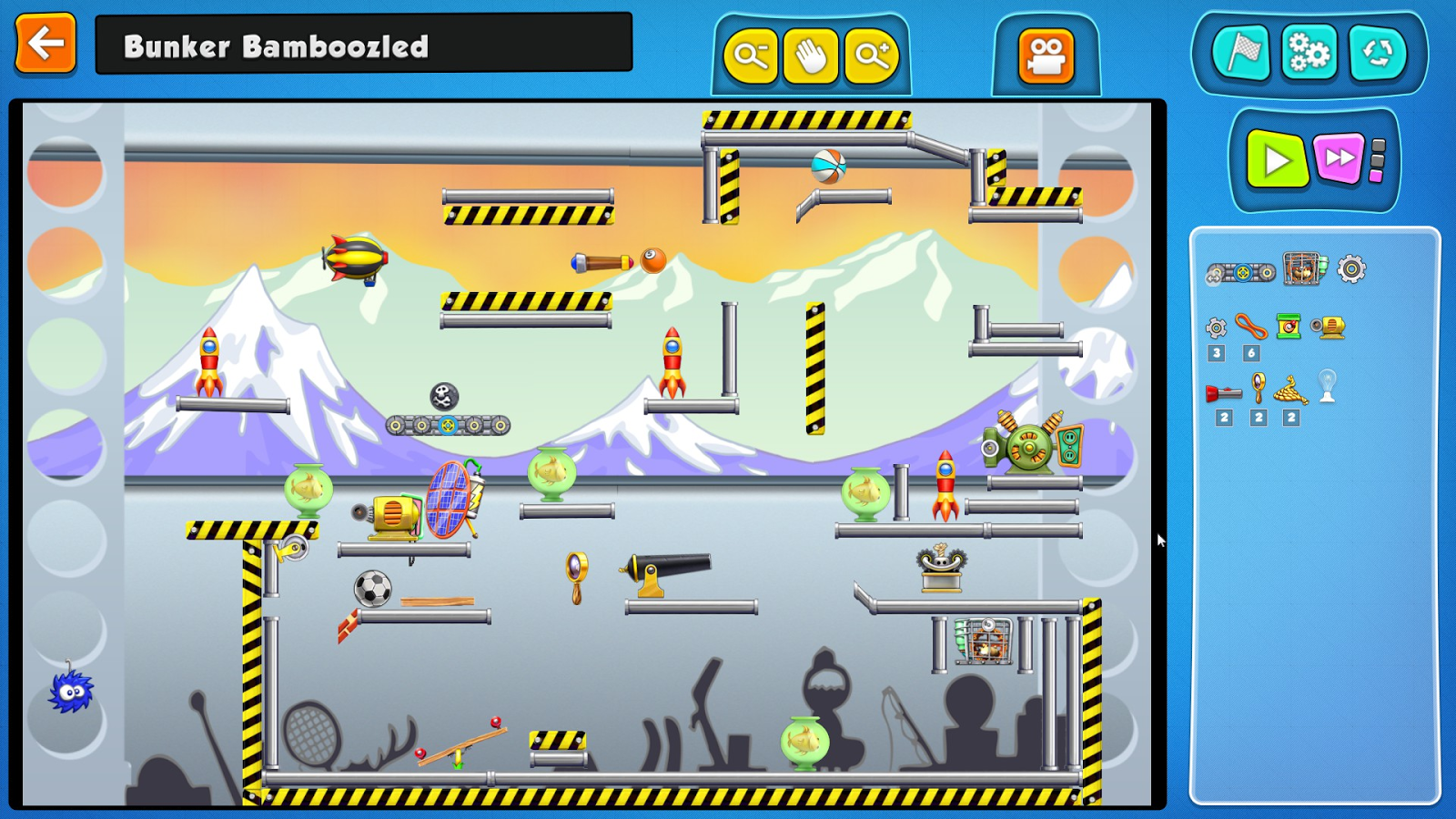Contraption Maker
by Spotkin
Vitals:
- Rube Goldburg Puzzler
- Worth the price ($14.99)
- Approx. 10 hours playtime
- Immense replay value
The makers of the classic Incredible Machine are back with
more wacky Rube Goldburgian puzzles and creative mayhem. Contraption Maker
revives the circuitous, absurd and educational engineering puzzle game genre,
duplicating all old mechanics that made its predecessor so great while
introducing a slew of new objects and features.
For me Incredible Machine is one of the great games of my
childhood. The wacky chain reactions and challenging cause effect problem
solving puzzles would keep me occupied for hours on end. Contraption Maker
appeals for those very same reasons though I’ll admit some elements feel
slightly juvenile now. It should however still be a wonderful bit of nostalgia
for anyone who loved the Incredible Machine as well as an excellent family
friendly educational tool for anyone looking to put a little fun into their child’s
development of a problem solving skill set.
The objective here is to put a cat in a box then drop it down a bottomless pit. Reddit is not going to be happy.
Contraption Maker brings back the traditional puzzle mode,
wherein a player must cause a chain reaction to cause a desired effect through
the use of various objects, each of which has its own physics and properties.
The game comes with a sizable library of scenarios of varying difficulty. The
later puzzles are actually pretty hard. One oddity I noted while playing through
them however was the games tendency to jump about through the difficulty
levels. For example on several occasions I would have just completed an easy
level puzzle and I would find myself, after selecting “next puzzle” immediately
facing a hard puzzle. It can be somewhat jarring, especially if you are trying
to complete the game in a linear manner, to have just knocked a bowling ball
into a bucket then immediately be tasked with helping prevent the uprising of
an army of clones using a cannon, a flashlight, some rope and a hamster. It’s
easy enough to click out to the menu and pick up where you left off but it is
somewhat annoying. It’s also worth mentioning that a majority of the puzzles
have zany back stories and it makes it much easier to engage with them when
instead of just popping a blimp you are stopping the self-destruct system of a
secret base.
Free build mode is
also available so players can step outside the confines of the presets built by
the games makers and experiment with any object they like, building their own
contraptions and puzzles for friends. Any puzzles that are built can also be
uploaded onto the steam workshop to share with other users. Players looking to
access this user generated content can do so easily by clicking the in game
community button. This kind of workshop integration always nice to see and is
perfectly suited to a game where players designs are the core of the games
extended life. The makers have even gone so far as to hold build offs in which
user created designs are judged by the game creators. The level of community
integration in the game is exemplary and provides for a theoretically endless
amount of content.
Some of the puzzles get pretty complicated
Contraption maker
also features an in game link to their wiki, for players looking to learn more
about how various objects work as well as a clearly labeled bug report option
which, while concerning at first, is a great way for a game to ensure that any
errors players encounter are fixed quickly. The game also promises to release
updates with new elements that can be incorporated into players contraptions,
already dogs have been introduced in a free patch.
Contraption make is a great successor to the incredible
machine and will be enjoyable to fans of the classic or more contemporary
puzzle enthusiasts. The game runs for $14.99 on steam and considering the
immense amount of additional content is probably worth picking up.















